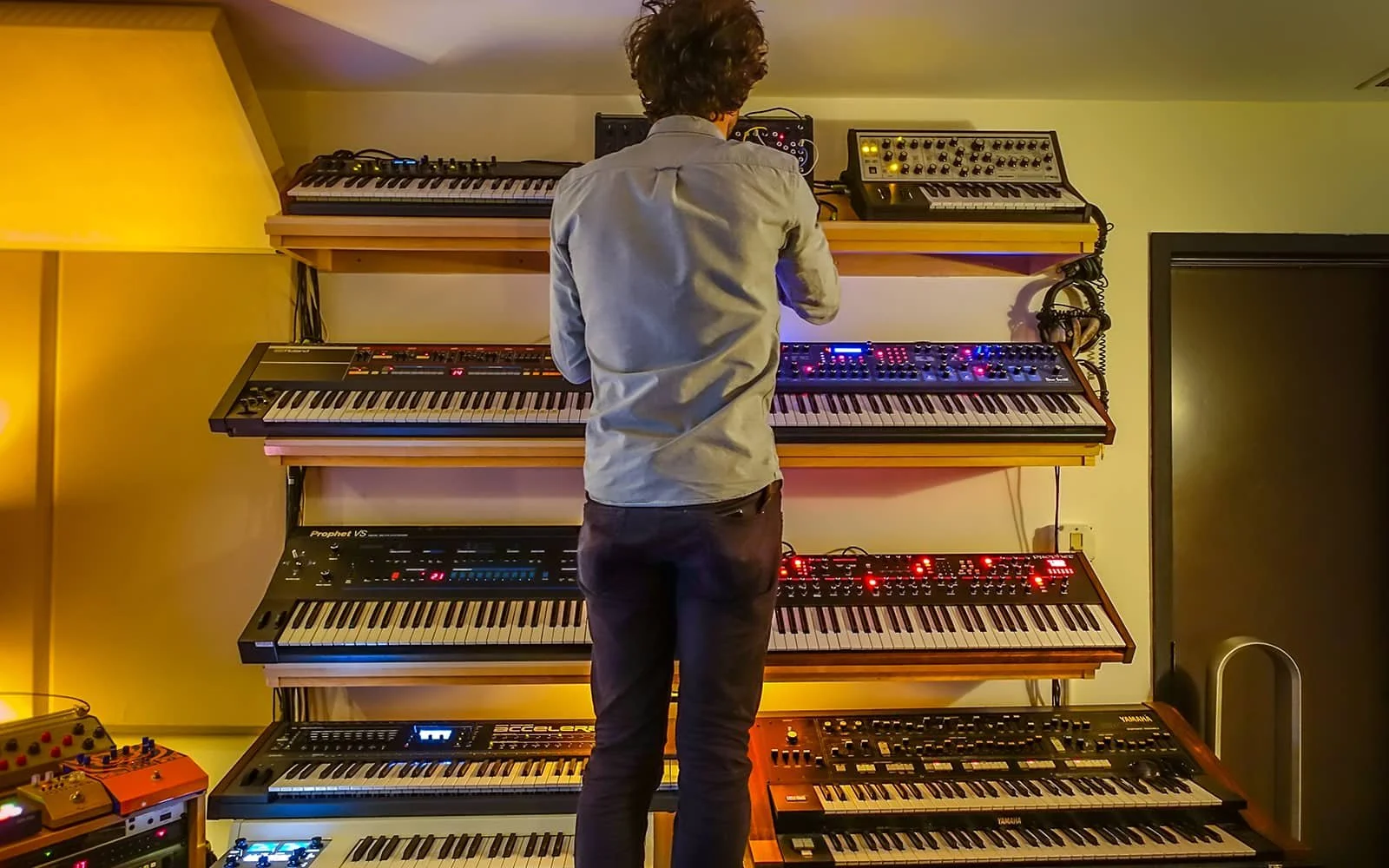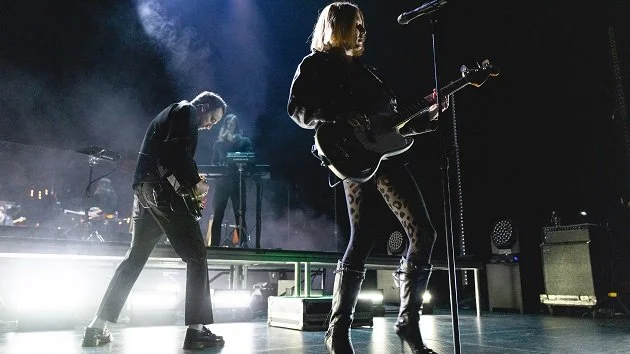Electroindiepop: How EDM Evolved After the Pandemic
Reeling from the loss of club culture and the music that coincides with it, a newfound musical affinity emerged, appearing in prominent music events like the Austin City Limits Music Festival. The style is not solely electronic, pop, or indie, yet somehow it is a unique blend of all of the above.
Written by Rachel Yost
Image courtesy of Universal Audio
For two years, a global pandemic halted society’s undying need to dance. COVID-19 and quarantine restrictions put a harsh stop to the communal culture of clubbing, raving, and indulging in one another's company on the dancefloor. With the quick disappearance of this social engagement came the dramatic fall of electronic club music. No place to dance meant no particular need for music that provokes such a desire. Music that makes you want to dance holds little weight when there is no one to dance with. Even tempting the idea of jamming out to EDM alone, five feet apart, felt like an utter slap in the face.
The popularity of electronic dance music was steadily building in momentum before the abrupt crash that was 2020. A significant cause of this peak was the rising buzz on social media surrounding music festivals. The opportunity to participate in a limitless celebration of all things music and dance equates to the perfect storm for EDM to shine. The infectious energy of EDM graced the ears of everyday radio listeners, festival goers, clubbers, and more for the entirety of the 2010s. Yet, due to the effects of the pandemic, EDM lost relevance, which in turn caused it to lose listeners, putting the genre in a dormant state. That is, until 2025.
This year’s Austin City Limits Music Festival lineup is overtly representative of this electric resurgence. The 2025 lineup includes bands such as Passion Pit and Phantogram, known for their danceable songs. Although these bands are not usually classified as traditional EDM, they share many musical characteristics with the genre and ultimately accomplish a very similar goal: to provoke expression from the masses through movement. Although not entirely adhering to the conventions of EDM, these bands represent electronic music’s multifaceted journey before, during, and after the pandemic. Groups like Passion Pit and Phantogram emerged before 2020, and the popularity surrounding these groups' music came from a simple desire to dance. According to Leo Weekly and Observer, dance music is an apt descriptor for both of these bands. The infectious energy of this style provokes this innate inclination and provides an avenue for self-expression. Post-pandemic, the reason for popularity shifts towards yearning for nostalgia. While the element of dance is still applicable to the sound, there is now an added level of dimension with audiences reminiscing on pre-pandemic life through their music. Society no longer just wants to dance; they now want to recreate the bliss of the 2010s with music that was popular then. However, due to this cultural shift, it makes sense that a musical shift away from true-to-form EDM ensued. Passion Pit and Phantogram’s sounds blend those of electronic, pop, and indie music. Blurring the lines between three massively distinct genres is no small feat, but once examined, the unification becomes clear.
Sonically, the electronic elements of their music stem from the synth-like core sound. The vocal quality of Michael Angelakos and Sarah Barthel adds in qualities of pop music style, as well as the instrumentation of the synthesizer, electric guitar, and electric drums. The indie-pop element is harder to explain. The title “indie” is an abbreviation for independent. According to Medium, this style was originally related to the nature of how the music is produced. The artist is allowed more freedom and independence in the creative process of the work. In terms of the music being discussed, indie holds additional meaning. Particularly poignant lyrics are a defining factor of songs produced by Passion Pit and Phantogram. If the beat, instrumentals, and even vocal sounds were to be stripped away, the lyrics themselves could stand alone (or be independent) and still create a significant impact on the listener. There is a poetic quality involved in their songwriting.
The song “Take a Walk” by Passion Pit presents itself as an opportunity to explore this triangular dimensionality. At the very start of this piece, about 26 seconds in, the track establishes a prominent synthesizer beat. Each note is varied in tone, alternating rapidly between sound from a higher and a lower register. This zig-zagging tone, accompanied by an everlasting electronic drum beat, repeats until the first verse begins. The synth then reappears in every chorus. The catchy nature of the synthesizer in this song is impressionable, and allows the piece to be considered electronic due to how prominent it becomes. The performance of the vocals provides the essence of pop music. They are audibly upbeat, especially considering their pairing with the electric guitar. A momentous build to the chorus intensifies, including a rhythmically increased drum beat, alluding to the build and release structure often present in pop music. Within the chorus itself, Michael Angelakos riffs in a higher register, additionally including a pop-esque sound.
Upon examination, the lyrics of “Take a Walk” are a bit somber. The writing is about forced disconnection from family, tolling financial struggles, and the impending doom of generational trauma and poverty. By referencing believable and relatable experiences such as, “Once I was outside Penn Station / Selling red and white carnations,” Angelakos personifies the subject of the song and crafts an experience that the listener is able to empathize with. The heavy weight of the lyrics creates meaning independent from other elements of the song, which represents that indie aspect of the music.
Image courtesy of 105.7 The Point
Phantogram’s “Mouthful of Diamonds” mimics this structure as well. A notably electronic series of notes stands out, emphasizing the song’s introduction. The synthesizer's sound parallels one that would be mixed on a turntable, with one strikingly high note in the middle of the series. This series alone comprises the entirety of the track’s first 12 seconds. Electric guitar layers over the synth, and the combination carries the listener to the first verse. These two sounds merge to build a tempo that keeps a steadily fast beat. The rhythm initially established by the synthesizer is moderately quick; however, with the addition of the guitar, a faster tempo permeates the song. Like in “Take a Walk,” once the vocals begin, the electronic sound dissipates, and it returns in the interludes between the end of a chorus and the start of a verse. Though the electronic sound is more prevalent in “Mouthful of Diamonds,” it serves the same purpose as in “Take A Walk,” that is to provide a foundational starting point for the song. The vocals, while lacking an overtly upbeat quality, reflect the pop music style. This is especially the case when accompanied by the steady guitar that carries alongside the pitch. The chorus is sung in a minor key, but then elevates to a major key in the sequential verses, which lightens the mood of the track. Tempo-wise, the vocals help to establish a faster pace, which allows for the song to remain applicable to the pop genre. Finally, the lyrics are a work of intention that holds its own weight independent from the other elements of the piece. Upon reading the lyrics, it becomes clear that they can be read like a poem. The rhyming nature of the words contributes to this characterization. Disappointment and disgrace run rampant throughout the tone of the lyrics, which contrasts with the connotation made from the song’s electronic and pop components. An example of this contrast appears when lead singer Sarah Barthel says, “Woah, the world is not round because of you / You know I’m not around because of you.” These lyrics express an incredibly blunt and confrontational tone without the mask of upbeat instrumentals. The song takes on a completely different purpose when analyzing the lyrics independent from the rest.
Still, the question lingers: what was it about a blend of electronic, pop, and indie that was so magnetic during a time of isolation? The explanation is alarmingly simple. With the popularity of EDM directly prior to the pandemic, and the rise of indie and indie pop during quarantine, these styles naturally began to merge. A deep longing to hit the dance floor combined with a newfound appreciation for indie music cultivated the rediscovery and reemergence of this aberrant style. The inclusion of varying sounds, levels of emotion, and degrees of energy equate to music that is able to be enjoyed by a wide range of people, capable of appeasing the thirst for club music for so many who were deprived. It exists as a musical smorgasbord in a most compelling manner, which is what allows it to flourish in this scrambled day and age.
After isolation, society was left with a desire to feel collectiveness and community. Because the nature of dance and dance music provides this togetherness that was so longed for during lockdown, once people were able, they jumped at the opportunity to indulge in it. Though the pandemic had its plethora of adverse effects, one of the positive results is a renewed appreciation for the privilege of enjoying one another’s company. This was beyond evident when observing the audiences at both Passion Pit and Phantogram’s ACL sets. Shared laughter, dance, and joy exuded from nearly everyone’s expression, even in the very back of the crowd. Every viewer seemed to be entirely focused on not only relishing in the music, but also the energy provided by those surrounding them, which is what rebuilding community is centrally about. No matter if their enjoyment was loud and obvious or more contained, it was incredibly clear that in those moments, a necessary collective healing took place.


